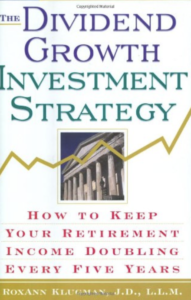Credit card stacking is a practice in which a borrower applies for multiple credit cards or loans within a short period, typically with different lenders, in an attempt to borrow more money than they would normally be approved for by a single lender.
The borrower may engage in credit card stacking with the intention of obtaining additional funds beyond their creditworthiness or to circumvent credit limits imposed by individual lenders.
How it Works?
 Here’s how credit card stacking works:
Here’s how credit card stacking works:
- Multiple Applications: The borrower applies for several credit cards or loans in quick succession, often with different financial institutions or online lenders.
- Limited Disclosure: During the application process, the borrower may not fully disclose all the credit inquiries they have made or the credit they have already been approved for, intentionally concealing their true level of debt.
- Rapid Borrowing: Once approved for multiple credit cards or loans, the borrower may quickly max out these newly acquired credit lines, resulting in a substantial amount of debt.
Credit card stacking is considered fraudulent because it misrepresents the borrower’s credit risk to each lender. By failing to disclose other recent credit applications and newly obtained credit lines, the borrower hides the true extent of their indebtedness. This can lead lenders to grant credit to an individual who would otherwise be considered too risky, increasing the likelihood of default and financial losses for the lenders.
Credit card stacking can have severe consequences for borrowers, including:
- High Debt Burden: Borrowers may end up with a significant amount of debt that becomes challenging to manage and repay, leading to financial distress.
- Credit Score Impact: The multiple credit inquiries and increased credit card utilization can negatively impact the borrower’s credit score, making it more challenging to qualify for credit in the future.
- Legal Consequences: Credit card stacking is considered fraudulent behavior, and if discovered, it can lead to legal action and damage to the borrower’s reputation.
To avoid credit card stacking and its potential consequences, borrowers should be responsible when applying for credit and only borrow what they can comfortably afford to repay. Additionally, it’s essential to be transparent with lenders about other credit applications and credit lines already obtained to maintain a positive and honest credit history.
Also Read:
When does capital one report to credit bureaus?
Credit Repair Asap: How to get credit repair quickly
Credit cards without Annual Fees for Couples
Cash Back Credit Cards for Married Couples: Maximizing Rewards and Savings
How to Make Money With Credit Cards
 Disadvantages of Credit Card Stacking
Disadvantages of Credit Card Stacking
Credit card stacking is not a recommended or legitimate practice, as it involves deceptive behavior and misrepresentation of one’s creditworthiness to obtain additional credit. Engaging in credit card stacking can lead to serious consequences and financial difficulties. There are no benefits to credit card stacking; instead, it can have several significant drawbacks:
- Fraudulent Behavior: Credit card stacking is considered a fraudulent practice. Concealing existing credit applications and credit lines from multiple lenders misrepresents the borrower’s financial situation, which is unethical and may lead to legal consequences.
- High Debt Burden: By obtaining multiple credit cards or loans in a short period, borrowers may accumulate a substantial amount of debt that becomes challenging to manage and repay. This can lead to financial distress and impact the borrower’s credit score.
- Negative Impact on Credit Score: Multiple credit inquiries made within a short time frame can negatively impact the borrower’s credit score. Each credit inquiry can result in a small decrease in the credit score, and a lower credit score may make it harder to obtain credit in the future.
- Risk of Default: Borrowers who engage in credit card stacking may be at a higher risk of defaulting on their credit obligations. If they cannot manage their multiple credit accounts responsibly, it may lead to missed payments and delinquencies.
- Legal Consequences: If lenders discover that a borrower has engaged in credit card stacking, it can lead to legal action, including potential charges of fraud or deception.
- Loss of Credibility: Credit card stacking can damage a borrower’s reputation with lenders and financial institutions, making it harder to establish trust for future credit applications.
 Instead of resorting to credit card stacking, individuals are encouraged to manage their credit responsibly and ethically. Here are some healthy credit practices:
Instead of resorting to credit card stacking, individuals are encouraged to manage their credit responsibly and ethically. Here are some healthy credit practices:
- Borrow Only What You Can Afford: Apply for credit only when necessary and ensure that you can comfortably manage the debt and make timely payments.
- Monitor Credit Report: Regularly check your credit report for accuracy and dispute any errors or discrepancies promptly.
- Build a Positive Credit History: Make timely payments, keep credit card balances low, and establish a positive credit history over time.
- Be Transparent with Lenders: Provide accurate and complete information when applying for credit. Be honest about your financial situation and credit history.
Responsible credit management, honest financial practices, and careful borrowing are essential for building a strong credit profile and maintaining healthy financial habits.
 Why Some People Use It?
Why Some People Use It?
While credit card stacking is not a recommended or ethical practice, some people may still attempt to engage in it due to certain perceived advantages or financial difficulties. It’s important to note that the reasons behind it do not justify the deceptive nature of the practice. Here are some reasons why some individuals may consider it:
- Desperation for Funds: Some individuals may resort to credit card stacking when they are in urgent need of funds and believe that obtaining multiple credit cards or loans will provide them with quick access to money.
- Attempting to Bypass Credit Limits: it may be used as an attempt to surpass the credit limits imposed by individual lenders. By applying for multiple credit cards or loans from different sources, the borrower aims to borrow more than they would be approved for by a single lender.
- Perceived Higher Approval Odds: Some people might believe that by applying for multiple credit cards or loans simultaneously, their chances of being approved increase, as each lender may not be aware of the borrower’s other credit applications.
- Limited Understanding of Credit: Some individuals may not fully comprehend the potential negative consequences of this or may not be aware of other legitimate ways to access credit.
- Financial Desperation or Lack of Alternatives: In certain cases, individuals facing financial difficulties or lacking access to other credit options might resort to this out of desperation.
- Lack of Financial Education: A lack of financial literacy and understanding of responsible credit practices may lead some people to make poor decisions, such as credit card stacking.
It is essential to emphasize that this is a deceptive and unethical practice. Engaging in such behavior can have severe repercussions, including legal consequences and long-term financial difficulties. Responsible credit management, transparency with lenders, and ethical financial practices are vital for building a healthy credit profile and maintaining financial stability.